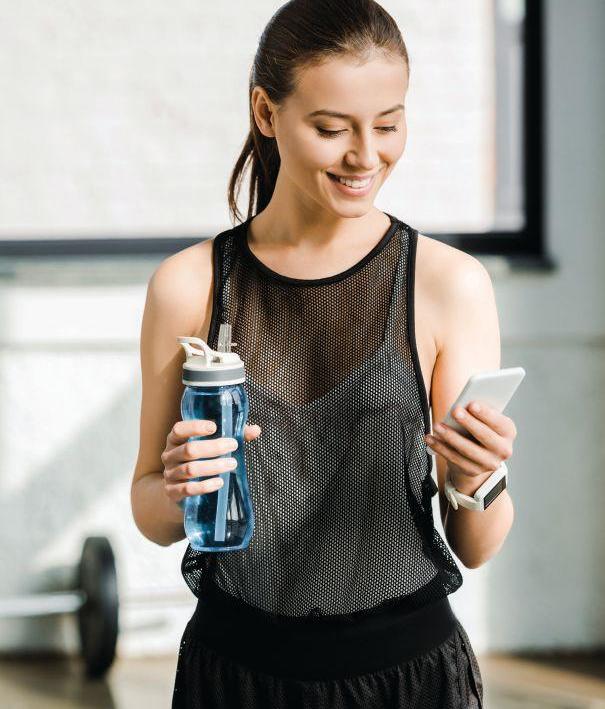
8 minute read
Keep moving with Martin Perez
Keep moving

Exercise regularly to be ready for polo season
By Gwen Rizzo
As the global pandemic hit, schools and businesses were shuttered. One by one polo events around the world were cancelled, and it is still unclear when the summer polo season might get underway. In the meantime, most of us have been holed up in our homes. While watching polo games
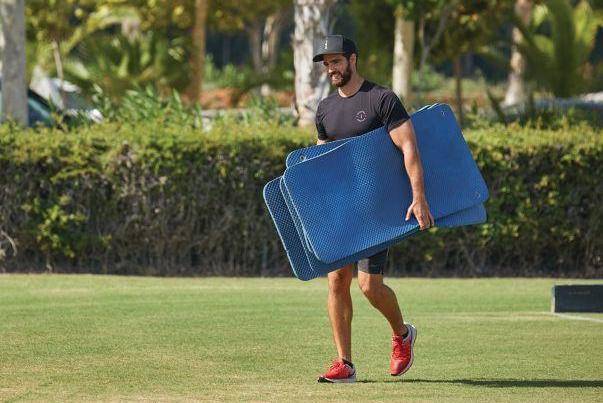
on TV and reading books might help bide the time away, it certainly doesn’t help the waistline.
I recently spoke with Martin Perez from Fitness for Polo to get some tips on staying fit so you can be ready when the first polo ball is bowled in. Perez has worked as a personal trainer for all levels of polo players and equestrian athletes for decades. He has written books on fitness, contributed articles in equestrian magazines and taught fitness clinics at polo clubs around the world.
In an effort to stay connected to his clients, he has adapted to the current situation by offering one-onone training sessions via Zoom, and recently began offering group training sessions.
“At the moment, what I am doing is one-on-one with people. I train them live,” he explained. “So, I keep pushing you through the workout. I know what you have so if you tell me, I have two kettle bells and a mat for abs, then I can create a workout and a plan for the week with whatever material you have in your house. I make it as real as possible, like I am there. I keep pushing, I’ll keep counting the repetitions, taking down time and noting your progress.”
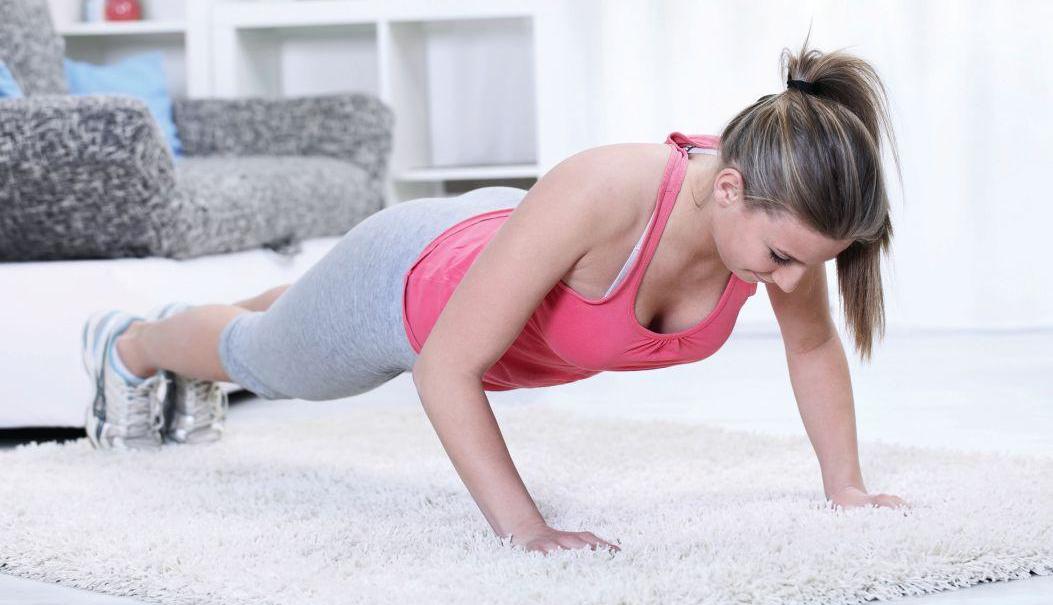
There is no doubt, having someone to work out with helps to keep you accountable and motivated. “The idea is to make it like nothing ever happened, like I am there,” Perez said. “I have already ‘transported’ all my clients to online training, which is going well. I am promoting my group workouts so everyone is able to join. Since I am currently in England, I set a time that works for almost everyone in the world. So, it is kind of the best for both continents. The idea is to start doing 30 minute workouts so people can get moving with something specific to their sport.”
The group training lessons generally are held in the afternoon in Europe so they are in the morning for the U.S. and Argentina. Some of the group lessons are offered free of charge.
“I am happy to give my time and help people to get in the best shape possible with these restrictions we are now living in,” he said.
Not everyone has a home gym or even fitness equipment readily available to them, but that doesn’t mean you still can’t get a workout.
Perez explained, “I never advise people to go and purchase equipment unless they tell me they don’t have a problem with money because trying to get some equipment can be very expensive. If you aren’t on a tight budget, I would recommend a stationary bike because it is something you can adjust the resistance, it won’t take much space in your house and you can use it forever.
“Something really cheap and easy, is resistance bands. Nowadays, you can find a set of five different resistance bands on Amazon for probably $20. The different resistance bands offer different intensities, which make it a lot easier to progress,” Perez said. “I can build different workouts from the upper body to lower body, push and pull workouts, those using coordination and balance, so the variety of exercises you can do with resistance bands are unbelievable. That is my go-to piece of equipment because it is inexpensive, it doesn’t take up any space and you can do a lot of things with it.”
Perez said even household items work well. Twoliter or one-gallon bottles work well for weight training, and a broom handle can be used for flexibility training such as twisting, bending and rotations. If you have little room to exercise, such as being confined to a high-rise in the city, use the stairs to exercise. You can also jump rope, run in place and do things like burpees (squat thrusts).
“I have some clients that live in a 20-story building. I tell them, look, instead of doing other cardio, go up and down the stairs for 10 minutes, then stretch,” Perez said.
According to Perez, cardio exercises are important. “You need to keep moving so your blood moves
If you are confined to home, you can exercise with what you have, such as running stairs, and doing exercises in your living room.
Online group training often motivates people to want to do better than someone else they see working out.
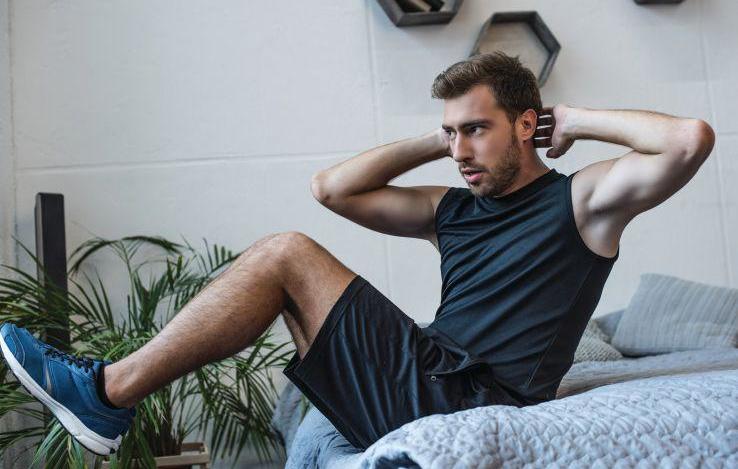
through your body, feeding your muscles with nutrients. Cardio is all about keeping your heart rate at a certain level for a long period of time. It is not just about getting tired or running out of breath. If you do something fast, of course your heart rate is going to go up, but if you are not sustaining that heart rate, then it won’t be a cardio exercise,” he explained.
If you are not already somewhat fit, be careful not to overdo it at first. Perez suggests working out two days a week with another day for flexibility, mobility, stretching and recovery. “You can do some yoga, that is very helpful,” he said. Slowly, overtime you can add more days of workout. Most people that are already fit with no health issues work out five days a week.
You know your own fitness level so you will know if you are able to withstand an hour of hardcore training. If you can’t, go for a half hour of medium intensity. Once the workout becomes easy increase the
While stuck inside, you are more likely to snack. Resist the urge by choosing healthy foods, like fruits and vegetables, rather than fatty or fried foods.

DEPOSIT PHOTOS
intensity before adding more time.
Perez’s online group lessons are 30 minutes. When he begins an exercise he offers alternatives for people who may be coming back from an injury or those that need something more or less intense.
“Let’s say I am doing a squat and somebody says to me or points to the knee, indicating they have a problem there, I will present a different option,” explained Perez.
Seeing others during group sessions helps keep you motivated. “If you see two people working out its one thing, but if you see 20 people working out at the same time, many will want to do more reps than the other guy and want to do it better and want a shout-out,” said Perez.
Using a big screen allows Perez to see everyone, so he can watch your position and offer advice during both group and private lessons. For example, if your position is not optimal he can tell you to keep your arm straighter or bend your legs more just as if he was in the room with you.
“I will tell you exactly what to do. We are going to work like I’m there,” Perez said. “I will say things like, well done, Carlos. Now check your squat, take your bum in, straighten your back or don’t let your knees go over the line of your toes. Or, well done, Katie, now try to do one more.”
Perez keeps people engaged with things like having a white board to keep track of how many of certain exercises each person is doing. So, if you did 20 squats one day, you can try to beat it the next time and get a shout-out during the next session.
As a polo player, you always have to keep working on your skills. Perez said, “I was lucky enough to train all the best players. Training them during the season means we have to work on skills, recovery and flexibility. In the off season, we are still working on skills but we are adding strength training.”
Some polo specific skills Perez says you can work on at home include using two tennis balls to work on hand-eye coordination. Some exercises to work on your riding muscle include laying on the floor, squeezing a pillow with your knees; or doing a front lunge with your forward leg next to your bed and squeezing your knee in toward the bed.
Other important aspects to work on include your abs, core and flexibility. “The sport of polo is very interesting because it is so physically demanding that every single aspect of the human body is [worked], DEPOSIT PHOTOS
from balance, coordination and strength to hand-eye coordination, flexibility, you name it. Everything is involved,” said Perez.
After your workout, Perez recommends doing an active recovery, like small drills with tennis balls or a dead lift. “The idea is to always incorporate some polospecific movements within your workout,” he said.
With most people stuck inside 24/7, you are more likely to be snacking more than usual. “If I go into the kitchen, instead of grabbing a cookie or something ‘naughty,’ I’ll have a cup of tea, water or soup. If it’s warm, I’ll have a piece of fruit,” Perez explained. It is always much better to have fruit available. When you are craving something sweet, have an apple, banana or an orange, or make a smoothie.
“You can also work on self permission. So, I might give myself 10 credits (equaling 10 cookies) a week. Will I spend them all at once, or spend them in seven days? I’m going to have just one today because I just made a huge effort to workout, doing everything the coach said and I’m not going to screw this up with a lot of cookies,” he explained.
There are many different nutritional plans but the bottom line is have a balanced amount of protein, fat and carbs. Stay away from fried foods and drink a lot of water throughout the day.
For more information, go to Fitnessforpolo.com and follow Fitnessforpolo on Instagram. •
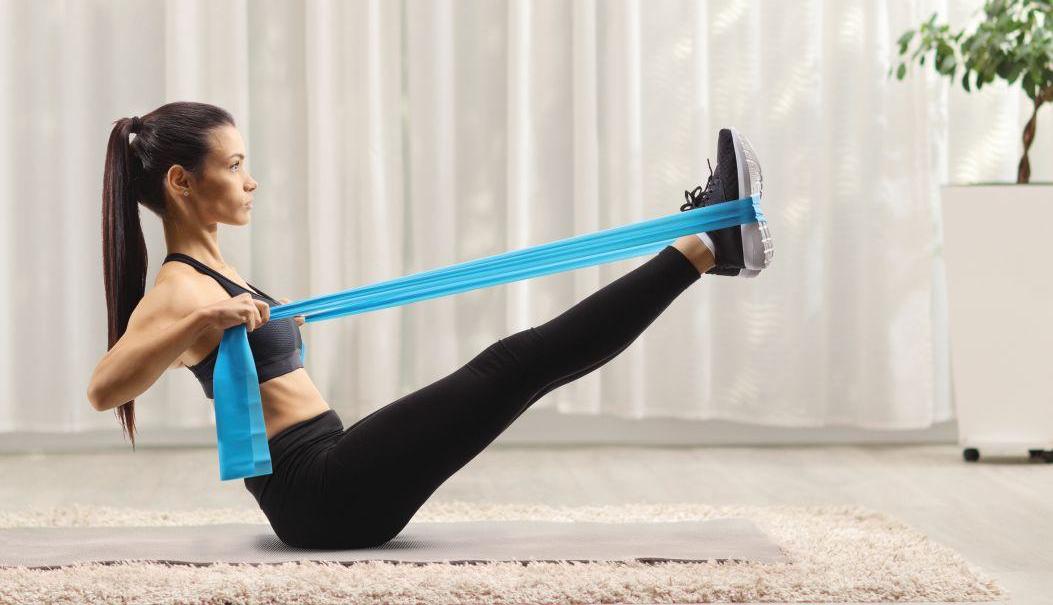
Perez can train players online, interacting with them as if he was working with them in person. Resistance bands are
Perez’s go-to equipment.
